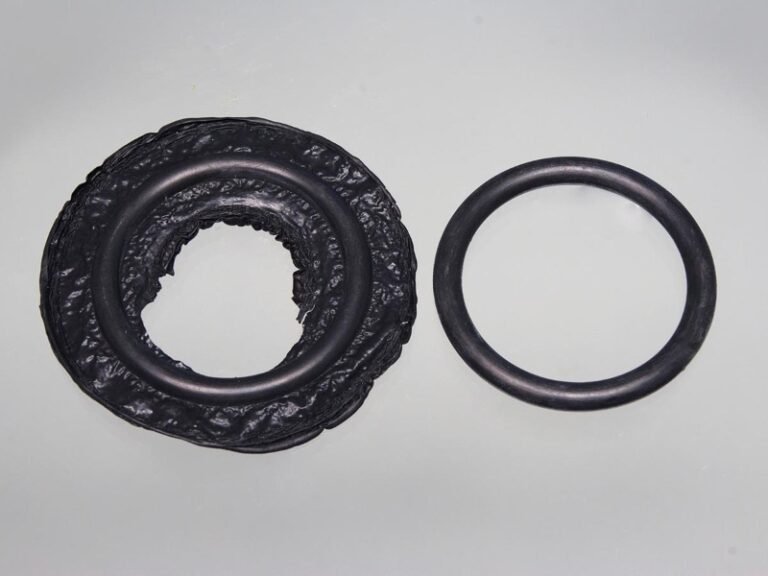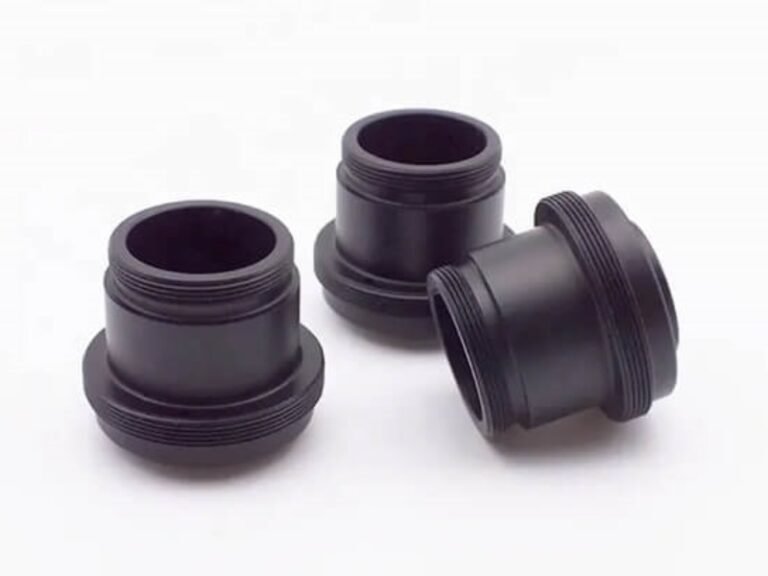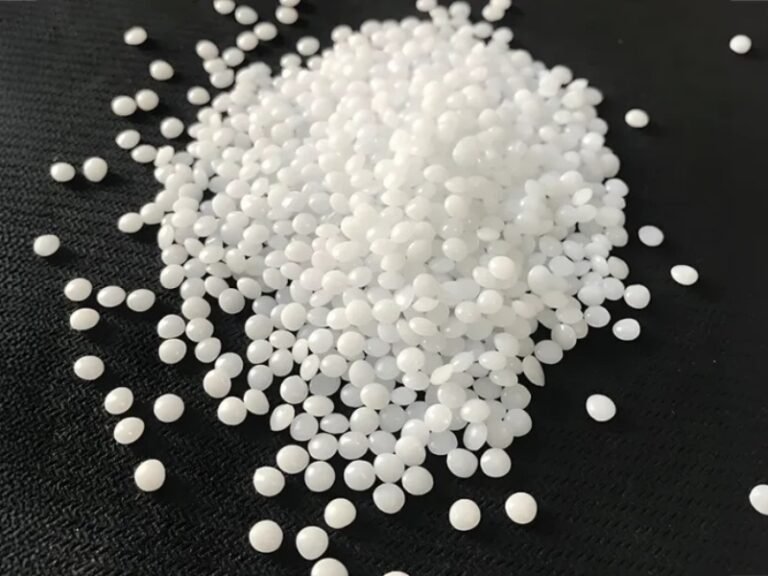Nylon is one of the most versatile and durable materials in the world of additive manufacturing. Its unique combination of strength, flexibility, and chemical resistance makes PA 3D printing an ideal choice for a wide range of applications, from functional prototypes to end-use parts.
Why Choose Nylon for 3D Printing?
Nylon is widely favored in 3D printing for its excellent balance of strength, toughness, and flexibility. It offers high impact resistance, good wear performance, and low friction, making it ideal for functional parts that require durability and movement. Its resistance to chemicals and fatigue further supports applications in demanding environments, where traditional plastics may fail.
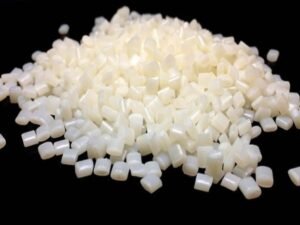
Commonly used PA plastic types in 3D printing include Nylon 12, Nylon 6, and reinforced grades like carbon fiber, which offer different balances of strength and flexibility for various functional requirements. Nylon 12 is particularly suited for SLS printing due to its low moisture absorption and high dimensional stability. Nylon 6 provides enhanced mechanical strength, while reinforced versions offer improved stiffness and thermal resistance. These materials are frequently used to produce components such as gears, brackets, housings, clips, and jigs, which often require strength, wear resistance, and dimensional accuracy.
At Zhongde, we work with a range of nylon materials suitable for both prototyping and end-use production. By leveraging SLS and MJF technologies, we help customers select the right nylon grade for their specific functional and mechanical requirements.
Nylon 3D Printing Processes
Nylon 3D printing utilizes three primary methods: Selective Laser Sintering (SLS), Multi Jet Fusion (MJF), and Fused Deposition Modeling (FDM). Each method has distinct characteristics, with material selection and application guiding the choice. Below, we detail these processes, their materials, and their respective strengths and limitations.
Fused Deposition Modeling (FDM) Nylon Printing
In FDM nylon printing, nylon filament is melted and extruded layer by layer to form the final part. Common materials used in this process include Nylon 6, Nylon 12, and reinforced composite nylons such as carbon fiber-filled nylon. Nylon 6 offers high strength but has higher moisture absorption, while Nylon 12 provides better dimensional stability. Composite nylons combine lightweight properties with enhanced rigidity, making them suitable for structurally demanding parts.
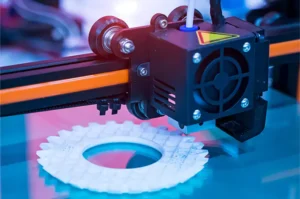
Compared to other materials, nylon tends to absorb moisture more easily during FDM printing. If the filament is not properly dried, it can cause bubbling, rough surfaces, or poor layer adhesion during the printing process. Nylon also has a relatively high shrinkage rate, which increases the risk of warping as the material cools—especially when printing large or complex parts. To improve print quality, it is often necessary to use enclosed build chambers, heated beds, and optimize part design through proper wall thickness, support structures, and temperature control.
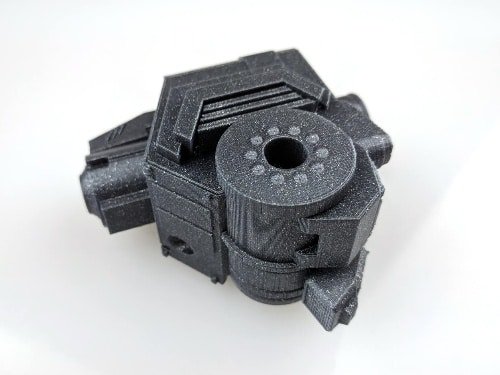
Nylon FDM Printing Service
Selective Laser Sintering (SLS) Nylon Printing
SLS nylon printing primarily uses nylon powders, which are sintered layer by layer using a laser. The most commonly used materials are PA12 and PA11. PA12 is favored for its dimensional stability and strength, making it suitable for functional structural parts. PA11, derived from bio-based sources, offers greater flexibility and is better suited for components that require impact resistance or elasticity. Since SLS builds parts without the need for support structures, it is particularly effective for producing complex geometries or hollow internal features.

Parts printed with SLS exhibit uniform strength with near-isotropic properties. However, the surface typically has a rough, powdery texture, which may require post-processing such as sandblasting, dyeing, or coating for improved aesthetics. A portion of the powder used during printing becomes degraded and cannot be reused, with typical recyclability ranging from 30% to 50%. Additionally, due to the localized heat from the laser, large parts can experience warping or internal stress during cooling, which may require careful temperature control or design adjustments to address.
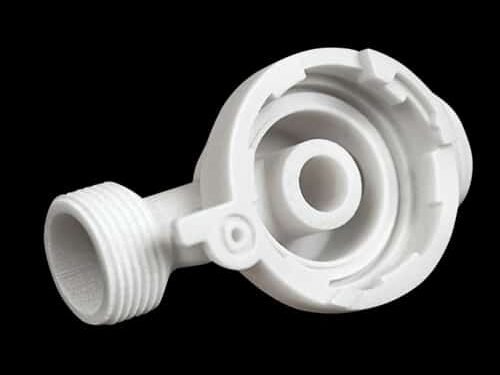
Nylon SLS Printing Service
Multi Jet Fusion (MJF) Nylon Printing
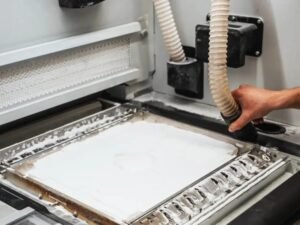
MJF also uses nylon powder, but unlike SLS, it employs a print head to selectively apply a fusing agent and detailing agent onto the powder bed, followed by infrared heating to fuse the selected areas. This approach creates stronger layer bonding and more uniform mechanical properties across the part. The most commonly used material is PA12, with options like PA11 and glass-filled PA12 (PA12-GB) available for applications that demand higher stiffness or heat resistance.
Compared to SLS, MJF produces parts with a smoother and more consistent surface, making them suitable for end-use without extensive finishing. MJF also offers higher powder reuse rates—up to 70%—which helps reduce material costs and improve efficiency. However, the technology supports a narrower range of materials, and current options remain relatively limited. As with other powder-based methods, printing large parts requires careful control of wall thickness, symmetry, and shrinkage compensation in the design to ensure dimensional accuracy and minimize distortion.
Comparison of Nylon 3D Printing Processes
| Aspect | SLS | MJF | FDM |
|---|---|---|---|
| Surface Finish | Smooth but grainy texture | Smoother than SLS, less post-processing | Rough, layer lines require finishing |
| Materials Available | PA12, PA11, carbon/glass-filled nylon | PA12, PA11, glass-filled nylon | Nylon 6, 12, 66, carbon/glass-filled nylon |
| Applications | Functional prototyping, short-run manufacturing, jigs/fixtures | Functional prototyping, end-use parts, manufacturing aids | Low-cost prototyping, proof-of-concept models |
Post-Processing and Surface Treatment for Nylon
After nylon 3D printing, nylon parts undergo cooling and powder removal using brushes, air blasters, or tumblers. Post-processing improves their appearance, functionality, and performance across various applications. These finishing techniques are essential for any plastic parts manufacturer aiming to deliver high-quality, production-ready components.
- Sanding and Smoothing helps eliminate layer lines to achieve a more refined surface. This can be done manually or with mechanical tools, though care must be taken not to damage fine features.
- Painting and Coating allows color customization and surface protection. Due to nylon’s inherent porosity, multiple layers of primer and paint are often necessary for even coverage and durability.
- Dyeing is commonly used for white or light-colored parts, with dyes penetrating approximately 0.5 mm to provide vibrant, lasting coloration in various shades such as black, red, or blue.
- Vapor Smoothing uses solvent vapors to slightly melt the surface, reducing visible print lines and creating a semi-gloss finish. This method is efficient for batch processing.
- Heat Treatment enhances mechanical strength and dimensional stability through controlled heating, particularly beneficial for load-bearing applications.
- Inserts and Embeddings such as screw threads, magnets, or metal components can be added during or after printing to improve part assembly or functionality.
- Ultrasonic Welding joins multiple nylon parts using high-frequency vibrations, forming strong and precise bonds in complex assemblies.
- Electroplating adds a thin metal layer to improve conductivity, corrosion resistance, or aesthetic appeal, especially in electronic or decorative applications.
- Polishing and Satin Finishing further reduce surface roughness through mechanical or chemical methods, achieving a glossy or matte refined texture depending on the finish required.
Tips for Printing with PA Nylon
Success in printing with nylon depends on meticulous preparation and technique. Below are actionable tips for FDM, SLS, and MJF.
Moisture Management: Store filaments or powders in airtight containers with desiccants.
FDM-Specific Tips
Pre-printing drying: Dry filaments at 70–80°C for 4–6 hours before printing. Moisture causes bubbles or poor layer adhesion, ruining parts.
Equipment: Use extruders rated for 240–280°C and heated beds (70–100°C). Enclose printers to stabilize temperatures and reduce warping.
Bed Adhesion: Apply glue sticks or PEI sheets. Nylon adheres poorly to cold or smooth surfaces.
Settings: Print slowly (30–50 mm/s) to ensure layer bonding. Test fan settings—low speeds minimize warping but may affect surface quality.
SLS/MJF Design Tips
Wall Thickness: Maintain 1 mm minimum; 0.3–0.5 mm for living hinges. Thin walls risk cracking under stress.
Interlocking Parts: Ensure 0.5 mm spacing for smooth movement. Tighter gaps trap powder, hindering functionality.
Warping Prevention: Avoid large flat surfaces. Include drain holes (2–3 mm) to remove trapped powder in hollow parts.
Getting Started with Nylon 3D Printing
Nylon 3D printing meet the prototyping and production needs. Zhongde offers a comprehensive 3D plastic printing service, leveraging advanced FDM and SLS technologies to meet diverse application needs. We provide expert guidance on material selection, design optimization, printing parameters, and post-processing to ensure your parts meet the highest standards of quality and performance.

